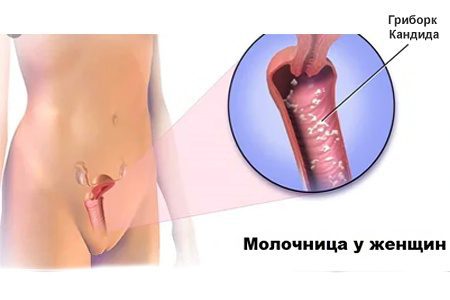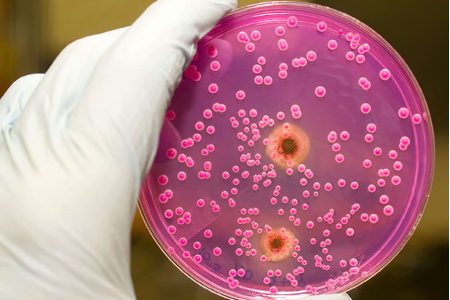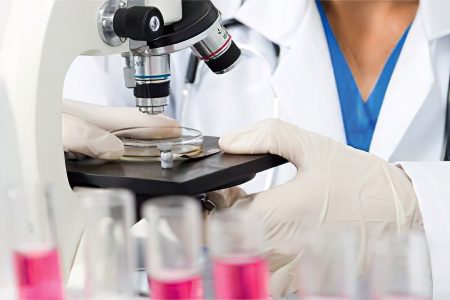Contents
Almost all adult women have heard of such a disease as thrush. Unfortunately, a large number of the fair sex have personally encountered this problem. In some cases, the fight against the disease drags on for whole months, and the disease returns again and again, reducing the quality of life and forcing once again to take medications.
What is thrush in women?

Thrush in women – This is a disease of the vagina, called in science – candidiasis. Associations with milk among the population arose due to the fact that women have white secretions on their genitals, similar in texture to cottage cheese.
The causative agent of the disease is the fungus Candida albicans. Scientists have calculated that this microorganism is present in the body in 80% of people as their own microflora, without causing any problems. The woman’s vagina is not normally sterile. On its epithelium there are microorganisms, including this fungus. It is involved in maintaining a normal pH level of the vagina, which is very important for the epithelium itself, the fertilization process.
The vagina’s own flora also competes with other unwanted microorganisms and reduces the likelihood of developing infectious diseases. At the same time, the immunity of the female body strictly monitors the state of affairs and, if necessary, inhibits the reproduction of “its own” bacteria. If for some reason this does not happen or conditions are created for their active reproduction, then the likelihood of developing thrush increases.
Causes of thrush in women

There are quite a few reasons that can lead to a violation of the delicate balance in a woman’s body and create conditions for the development of thrush.
Taking antibacterial drugs is one of the most common reasons. Many diseases now have to be treated with antibiotics. This is an effective group of drugs that allowed many deadly diseases to be eliminated in just a few days and prevent the development of serious complications. However, antibiotics have their own side effects. They do not act selectively on one microbe and can adversely affect the own microflora of the vagina.
Fungi they have a completely different structure of the cell wall and antimicrobial antibiotics are not dangerous for them. The result is the following situation: fungi, causative agents of thrush, remain safe and sound, and bacteria suffer and partially die. Not a single niche in nature is empty, and the place of dead microbes is occupied by Candida albicans, which simply has no competitors left. As a result, a woman develops candidiasis.
Decreased immunity, which inhibits the growth and reproduction of conditionally pathogenic flora. Candidiasis is the most common opportunistic infection in patients infected with HIV. If patients develop candidiasis in many places (oral cavity, vagina, intestines) and do not respond well to treatment, then there is a high probability that HIV is the root cause. Chronic inflammatory diseases and long-term bacterial infections can also adversely affect the body’s immune defenses.
Disturbed metabolism – almost always this condition is caused by diabetes mellitus. Few people know that with this disease in the human body, not only there is a failure in the regulation of sugar levels, but also fat and protein metabolism suffer. Diabetes mellitus contributes to the development of candidiasis by two mechanisms at once.
In the absence of proper control on the part of a person (taking drugs or insulin, monitoring glucose levels), his blood contains a lot of carbohydrates. This cannot but affect their content in the intercellular space and in the vaginal mucus. It turns out that bacteria and the fungus Candida albicans find themselves in a sweet environment that is ideal for their nutrition and reproduction – the likelihood of developing thrush increases.
Immunoglobulins – These are substances due to which the implementation of the immune response of the human body occurs. Violation of protein metabolism, which takes place in diabetes mellitus, affects their formation only in a negative direction. The result is a decrease in immunity and the lack of necessary control over the state and composition of the microflora. Fungi willingly take advantage of this, given a good nutrient medium, and multiply uncontrollably, causing candidiasis.
Unbalanced and irrational nutrition – Normally, a person should take proteins, fats and carbohydrates daily in a certain ratio by weight. Many girls and women call themselves a sweet tooth and eat an unacceptably large amount of sweets, flour products, sweet carbonated drinks. Their pancreas tries but cannot produce enough of the hormone to bring their blood glucose levels down to even the upper limit of normal. Further, everything happens approximately as it was described in the case of diabetes: a lot of sugar in the blood – a lot of sugar in the epithelium of the vagina – good conditions for the reproduction of Candida albicans. In addition, people who abuse sweets have an increased risk of developing type XNUMX diabetes, which is much more serious and dangerous than thrush.
Hormonal background. The condition of a woman’s genital organs, including the vagina, is highly dependent on the hormonal background in her body.
Pregnancy can lead to its significant change, which increases the likelihood of developing thrush.
Incorrectly selected hormonal contraceptives can change the level of hormones in the blood so much that the likelihood of developing candidiasis will increase.
Many diseases of the endocrine system may lead to the development of thrush. Experienced doctors always remember this and try to find the very original factor. This allows not only to prevent the development of candidiasis in the future, but also to eliminate hormonal pathology, which is important.
Wearing tight synthetic underwear or improper use of sanitary pads (they need to be changed quite often) creates such conditions under which heat and moisture do not go outside, and these are ideal conditions for the reproduction of fungi.
Symptoms of thrush in a woman

The disease has quite specific manifestations, which allows physicians to quickly make the correct diagnosis. Often, even before visiting a doctor, women themselves understand what kind of illness they have and begin to make their own attempts at treatment, which is unacceptable.
So, thrush is characterized by:
Curdled discharge from the external genitalia. They are especially noticeable on dark underwear. They are mucus with a lot of white lumps.
Feeling of itching and burning in the vaginal area. In no case should you try to strongly scratch the affected area, since this can damage the delicate inflamed epithelium and create conditions for the penetration of pathogens into the depths of the tissues. Also, when combing, the discharge spreads to a large surface and causes additional inflammation.
Pain and discomfort when urinating – due to a decrease in the protective properties of the mucus of the vagina and urethra. The epithelium is defenseless against such an aggressive liquid as urine, and inflammation increases the sensitivity of receptors.
Pain and burning during intercourse – this is just one of the reasons why it is worth giving up sexual activity until the disease recedes.
Smell – it should be discussed separately. It is not very pronounced and has a sour tint (“kefir”). In most cases, only a woman feels it, but for her this is a very big problem. Patients believe that all her interlocutors will certainly be able to catch him. Many venereal diseases and bacterial vaginosis are accompanied by a really bad smell, but it has almost nothing to do with thrush.
With an erased (atypical) course of thrush and mild symptoms, women may be disturbed by only one of the indicated signs. It is impossible to learn about the disease in such cases without professional help. Candidiasis often accompanies many gynecological diseases, including latent and dangerous sexually transmitted infections. Only a qualified doctor is able to analyze the symptoms and prescribe the correct treatment. Self-diagnosis in severe cases of manifestation of the disease is useless, and self-treatment is dangerous.
A comparative table of characteristic symptoms for thrush, bacterial vaginitis and trichomoniasis can be seen in the table. It is not worth considering it as an aid in diagnosis. Diagnoses are made by the doctor on the basis of tests, examination and complaints of the patient. Even in such cases, the presence of other sexual infections associated with thrush is not excluded. Self-medication is unacceptable. All appointments must be made by the attending physician.
Thrush | Smell: Sourish Allocations: Homogeneous, thick milky, reminiscent of cottage cheese Discomfort: Burning, itching, pain during intercourse and urination |
Trichomoniasis | Smell: Unpleasant fishy smell Allocations: Copious, purulent, frothy, yellowish green Discomfort: Intense increasing itching (external and internal), urination disorders, redness (irritation) of the vaginal mucosa. |
Bacterial vaginitis | Smell: Smell of fish (characteristic of discharge) Allocations: Copious and liquid grey-white, sometimes frothy Discomfort: Vaginal itching, burning, mucosal irritation. |
The first signs of thrush in a woman

The first signs of the development of thrush, which make a woman alert, are:
Acute burning and itching in the vulva;
Hyperemia (redness) of the external genitalia and vagina;
The appearance of copious white vaginal discharge;
Painful urination;
Pain during intercourse.
As a rule, the first symptoms appear a week before the onset of menstruation. Burning and itching are greatly increased in a warm environment, especially after taking a bath, and often interfere with sleep. And the appearance of white discharge removes all suspicions from a woman about the disease and makes her see a doctor.
The consequences of thrush in women
In the case of thrush, it is necessary to consider several options for the development of events:
The patient began to treat acute thrush in a timely manner. With the right behavior of a woman and following all the recommendations of specialists, you can quickly get rid of thrush completely. Modern drugs are characterized by high efficiency and a small number of side effects.
Acute thrush was treated incorrectly and out of time. Constant postponing of the visit to the doctor and non-compliance with his recommendations subsequently determine the likelihood of the transition of the disease into a chronic form. In this case, it is much more difficult to treat the disease, and the complications are much more serious.
Complications of chronic thrush

According to statistics, in almost 70% of cases, the chronic course of the disease leads to the development of any complication:
Adhesions of the pelvic organs;
Obstruction of the fallopian tubes due to the development of adhesions;
Infertility is a consequence of the development of obstruction of the tubes or damage to the ovaries;
Decreased immunity of the body, which leads to the frequent development of infections;
If a woman is pregnant, then fungi can still infect the fetus in utero;
The transition of the disease to other organs of the small pelvis – the bladder, the rectum;
Entering the pathogen into the blood – candidal sepsis.
Is thrush transmitted to men?
Normally, a man’s body constantly encounters the same fungi as a woman’s. Since they are contained in the vagina of most women, the sexual organs of the partner in any case come into contact with the causative agent of thrush. A man can also develop genital candidiasis, which has approximately the same manifestations and causes as the female. Therefore, if a man has reduced immunity, has diabetes mellitus or other prerequisites, then he can easily become infected with thrush. Moreover, a sexual partner can bring a large amount of fungus into a woman’s body, which will provoke the development of the disease.
Thus, thrush is transmitted to a man only if he has the prerequisites for its development, and he does not follow the basic rules of personal hygiene. In the end, it is an order of magnitude easier for a man to remove all pathogens from the surface of the penis by simply washing it thoroughly, unlike a woman. Yes, and the sexual intercourse itself in the presence of candidiasis is a thoughtless action, contrary to the recommendations of doctors and is unlikely to give pleasure.
How to treat a husband for thrush?
Treatment of a spouse or partner is carried out according to the same scheme as that of a woman. For therapeutic purposes, drugs for internal use are used, for example, Pimafucin 100 mg 4 times a day. The treatment cycle is 10 days.
Most often, candidiasis in men is asymptomatic. If there are visible signs of the disease, a thorough examination should be carried out to identify an infection that reduces immunity. These pathologies include hepatitis B, C, HIV infection, AIDS, acute leukemia.
Diagnosis of thrush

For an accurate diagnosis and drawing up a complete clinical picture, the doctor must have not only the results of the tests, but also draw conclusions based on the examination data. Going to an appointment with a gynecologist, a woman will have to answer a number of questions. You need to be prepared for this and, if possible, provide the most complete and reliable information that will help the doctor.
The specialist may ask:
What symptoms are of concern? You need to describe in detail.
When were the first manifestations of the disease noticed?
Have the signs of the disease changed since its onset? If so, how.
What is the nature of the discharge? Color, smell, abundance, consistency, all the details are important.
What causes symptoms to worsen? If the condition worsened, what caused it? When and for what reasons does relief come?
Have there been symptoms before?
Have you ever been treated for a sexually transmitted disease?
How active is your sex life? How many sexual partners?
How and with what do you protect yourself?
Has your partner noticed discharge from the penis?
What medicines have you taken recently? If antibiotics were prescribed, which ones?
How many days do periods last? What is their regularity?
Has douching ever been used or not?
Are there any chronic diseases? If there were in the past, which ones?
After collecting the necessary information, the doctor examines the patient. A smear of the cervix and vaginal mucosa is taken. Microscopic examination of the smear may reveal fungal mycelia. This examination method is considered more informative, since it is impossible to recognize the type of fungal infection that caused thrush.
To find out which fungus provoked the disease, bacterial sowing of a smear on nutrient special media allows. The sensitivity of the identified colonies, their susceptibility to antifungal drugs is determined. The quantitative factor is also very important. A small number of colonies is considered the norm for a healthy vaginal microflora.
All ongoing studies of specialists indicate the fact of the connection of thrush with other sexually transmitted infections. In most cases, candidiasis occurs in a complex, while the symptoms of thrush are masked by latent infections. There is a trend of their growth and wide distribution in recent decades. That is why doctors recommend a differential diagnosis of thrush. This will reveal the presence of diseases such as gardnerellosis, gonorrhea, trichomoniasis, genital herpes, ureaplasmosis. A visit to a venereologist and passing the necessary tests make it possible to confirm or exclude the presence of dangerous infections and draw up the correct treatment plan for thrush.
A comprehensive examination in the chronic form of candidiasis helps to identify diabetes mellitus. The first symptom of this serious disease is thrush. If the tests show an excess of blood sugar, a woman is recommended to contact an endocrinologist and follow his recommendations.
The participation of a gastroenterologist is also important. Abdominal ultrasound may be needed to effectively treat candidiasis. Most likely, you will need to donate feces and check the intestines. If there are indications, FGS and other diagnostic measures are prescribed.
If thrush causes complications in the urinary system, it is necessary to visit a urologist, undergo an examination and pass the necessary tests (ultrasound of the bladder and kidneys, urinalysis according to Zimnitsky, a smear from the urethra).
When should you consult a gynecologist?
Relapses of candidiasis are observed more often than 4 times a year.
Treatment for a week does not give results and does not relieve symptoms.
If, after taking the prescribed drugs, irritation appears in the genitals.
In cases where the temperature rises with thrush, weakness is felt, pains in the lower abdomen begin to bother.
With recurrence of candidiasis after a treatment course.
If during treatment appear blood and purulent discharge. Especially dangerous is the discharge of a brown tint in the middle of the therapeutic cycle.
How to treat thrush in women?

If the disease has a mild course and the woman asked for help in a timely manner, then doctors try to get by with local preparations. These are tablets, creams or suppositories that are inserted into the vagina. There they quickly get to their destination and begin to act.
At the first symptoms
At the first symptoms of the disease, it is advisable to prescribe a specific treatment regimen:
Clotrimazole in the form of suppositories for 14 days.
Fluconazole – tablets for 7 days.
After a two-week treatment, a course of probiotics is recommended to restore the intimate microflora.
Video: Dr. Evdokimenko “How to cure thrush in women and men? Simple tips, effective remedies”









